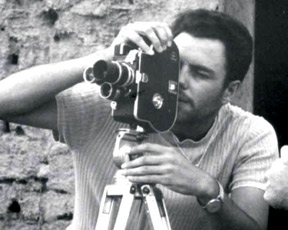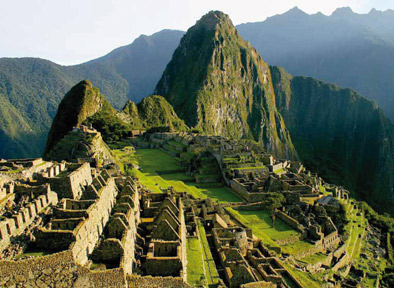Important landmarks in Latin American cinematography

Over the past few weeks I have been focusing on post-Boom writers of
Latin American fiction. During this time, I have reviewed three
popularised novels, written by some of the most highly acclaimed authors
from the era following the Boom .All of these books have subsequently
been made into films, yet I have concentrated on the novels to
illustrate how new narrative styles were used in 'new novel' literature.
Yet the era following the Boom, which experimented with magical realism,
inter-textuality ( a story within a story and the use of tropes ) and
non-traditional narrative styles, were even more successful within the
film industry.
Cinematography popularised political thinking and made it accessible
to the masses to an even greater extent than the new novels, since
motion pictures tend to reach wider audiences.
Fernando Solanas, Octavio Getino and Gerardo Vallejo founded the 'Grupo
Cine Liberación' (The Liberation Film Group) which was an Argentine film
movement that took place during the end of the sixties.
The 'Grupo Cine Liberación' became linked to the Peronist Left, and
in later years, other films directors (grupo Realizadores de Mayo,
Enrique and Nemesio Juárez, Pablo Szir, etc.) revolved around this
activist core. Ferando Solanas is an Argentine Film director,
screenwriter and politician. His films include 'La hora de los hornos' ,
'Tangos el exilio de Gardel' , 'Sur' , El viaje' , 'La nube' and 'Memorias
del saqueo' and many others.
 |
|
Raymundo Gleyzer |
One of the principles of the 'Grupo Cine Liberación' was to produce
anonymous films as an endeavour to favourize a collective process, to
create a collective discourse and to protect the film makers from
political repression.
According to Lucio Mufud, the collective authorship movement of the
1960s and 1970s was "among other things, about erasing any authorial
mark. It concerned itself, on the one hand, with protecting the militant
creators from state repression. But it was also about having their voice
coincide with the 'voice of the people.' " Another similar group
included the 'Grupo Cine de la Base' (The Base Film Group), which
included the film director Raymundo Gleyzer, who produced Los Traidores
(The Traitors, 1973), and later "disappeared" during the dictatorship .
Both 'Grupo Cine Liberación' and 'Grupo Cine de la Base' were especially
concerned with Latin American integration and neo-colonialism and even
advocated the use of violence as one of the alternative possible means
against hegemonic power .
Since Solanas was at the forefront of this 'Grupo Cine Liberacion'
which revolutionised Argentine cinema in the 1970s, developing its
social conscience and political voice, he and his actors were threatened
by right-wing forces in the 1970s. One of his actors was assassinated
and Solanas himself was almost kidnapped. Significantly he, together
with Octavio Getino, wrote the manifesto "Toward a Third Cinema".
The Idea of a political Third Cinema, as opposed to Hollywood Cinema
and European Auteur Cinema, inspired film makers in many so-called
developing countries, thus moving from any reliance on the film
industries in the United States and Europe. It was a pioneering move
that allowed Latin America to create its own styles and methods of
creating films.
Solanas had studied theatre, music and law. In 1962, he directed his
first short feature Seguir Andando and in 1968 he covertly produced and
directed his first long feature Film 'La Hora de los Hornos', or 'The
Hour of the Furnaces', a documentary on neo-colonialism and violence in
Latin America.
The film won several international awards and was screened around the
world. Solanas has won the Special Jury Award, the Critics Award at the
Venice Film Festival and the Best Director Palme at the Cannes Film
Festival. He was awarded a special Golden Bear at the 2004 Berlin Film
Festival.
Perhaps one of the reasons behind his success as a film maker was the
fact that he often collaborated with other Latin American artists,
rendering his films authentic Latin American creations. He collaborated
with the great tango composer and musician Astor Piazzolla on
soundtracks for several films, including 'El Viaje'. Piazzolla
consistently experimented with other musical forms and instrumental
combinations. In 1965 an album was released containing collaborations
between Piazzolla and Jorge Luis Borges, in which Borges's poetry was
narrated over very avant-garde music by Piazzolla including the use of
dodecaphonic (twelve-tone) rows, free non-melodic improvisation on all
instruments, and modal harmonies and scales.
Piazzolla's nuevo tango was distinct from the traditional tango in
its incorporation of elements of jazz, its use of extended harmonies and
dissonance, its use of counterpoint, and its ventures into extended
compositional forms. By using Piazzolla's music and by referencing him
in films, modern Latin American film makers, such as Solanas break with
tradition (particularly of European origin) again.
I will now review the plot and meaning of Solanas' 'El Viaje', in
order to explore how his films document and comment on Latin American
history, culture and politics and the need to search for an authentic
Latin American identity.
Martin Nunca, a young man living in Ushuaja, a cold southern town in
South America, decides to start a trip looking for his father, an
anthropologist, who was last reported as working in Brazil. Leaving
behind his mother and stepfather, the boy travels north by bike,
encountering scenes of exploitation of the poor, cultural destruction
and abject subjugation to the United States. An example of this is when
a national president, whose surname means "frog", puts on rubber
flippers in order to survey the damage in a flooded city.
The United States is not the only foreign power to which Solanas
implies criticism throughout the film. For example, another flooded town
is filled with people punting through the deluged streets in boats,
cursing the floods and fishing out faeces floating around in the water.
This scene is reminiscent of Venice, which is known to be very polluted
and said to smell like an open sewer. The implication is the new world
neither appreciates nor reveres European traditions in same way that
some Europeans themselves do. The flood also represents crippling
national debt and the filth represents the corruption so intrinsic to
Latin America politics.
'El Viaje''s clear criticism of the state is also exemplified by
portraits of successive dictators being blown off the walls of a
corridor within a freezing college (denoting deprivation on several
levels), where perishing winds sweep the building, howling eerily.
As in other post-Boom Latin American fiction, a good deal of magical
realism is used to create a surreal, strange, yet simultaneously amusing
narrative. It makes it possible to implicitly criticise both collective
powers and individuals, whilst providing a highly entertaining film that
will appeal to the masses in a number of different ways.
 |
|
MachuPicchuin Peru |
The cinematography is spectacular and there is much to draw the
viewer on a purely aesthetic level. However, literary metaphors are
introduced when needed in the form of Martin's absent father, the
ancient people of Latin America and Martin's girlfriend to make the film
to work on a more profound level and to speak to the intellectually
minded.
During his journey, Martin comes across many ancient settlements
which have been destroyed by European conquistadors. He subsequently
realises that the ancient citizens have been either totally wiped out or
gradually bred into extinction.
His astonishing journeys take him as far as Mexico, and in so doing,
he discovers many unexpected facts about his own Latin American essence.
One of the key moments for Martin is when he discovers Machu Picchu, the
one city in Peru that was not conquered by the Spanish. The discovery of
the ruins of this beautiful city in the mountains almost comes as a
religious epiphany. Martin subsequently spends a lot of time wondering
what eventually happened to its inhabitants. It seems that the city
takes on a personality of its own as Pablo Neruda's poem is mentioned
via Martin's musings. Neruda also addresses the city as though it were a
person with closely guarded secrets and as though it had the power to
heal and purify, simply for the reason that it managed to avoid being
conquered by the Spanish.
The journey and search for Martin's own identity parallels that of
Latin America. The journey into his own heart leads him into the very
heart of the Latin American continent itself and Martin's search to
understand his situation in relation to his father and to his personal
history leads to the discovery of the history of the land and of its
inhabitants. In trying to escape his own unsatisfactory life in the
southern most tip of the continent, Martin discovers both ancient and
modern corruption and genocide and realises that life is not perfect
anywhere else either. As he travels, he compiles a log book, a collage
of Latin American history in comic form.
This is a rite of passage for him and one in which the epic, the
baroque, the grotesque and fantasies all merge.
The name given to this comic is "discovery", which alludes to the
anniversary of the discovery of Latin America itself. Yet rather than
the anniversary being celebrated, Martin, through the course of his from
Ushuaia to Oaxaca (Mexico), discovers that there is little to celebrate,
since the continent is currently under siege by foreign debt, political
corruption, ecological destruction and hunger.
Fernando Solanas achieved what he set out to do in through 'El Viaje',
which was to present clear criticism of the failed dictatorships, the
subjugation of Latin American to foreign powers, the corruption in the
government and the floundering sense of national identity and future
direction.
He managed this by using unusual narratives and cinematography to
encompass the widest demographic and by making the film accessible on
several different levels. At one end of the scale, the film is highly
entertaining and easy to watch and at the other, it appeals to
intellectual and influential audiences, including those outside Latin
America.
Finally film does offer hope for the future yet suggests that in
order to progress, it is necessary to find and return to Latin America's
indigenous roots, to be reconciled with the past and then to bring
ancient traditions into the present.
It is a most enjoyable film and one that I would highly recommend
both for its entertainment value and for its ability to teach lessons
both from Latin America's past and its current situation.
|

